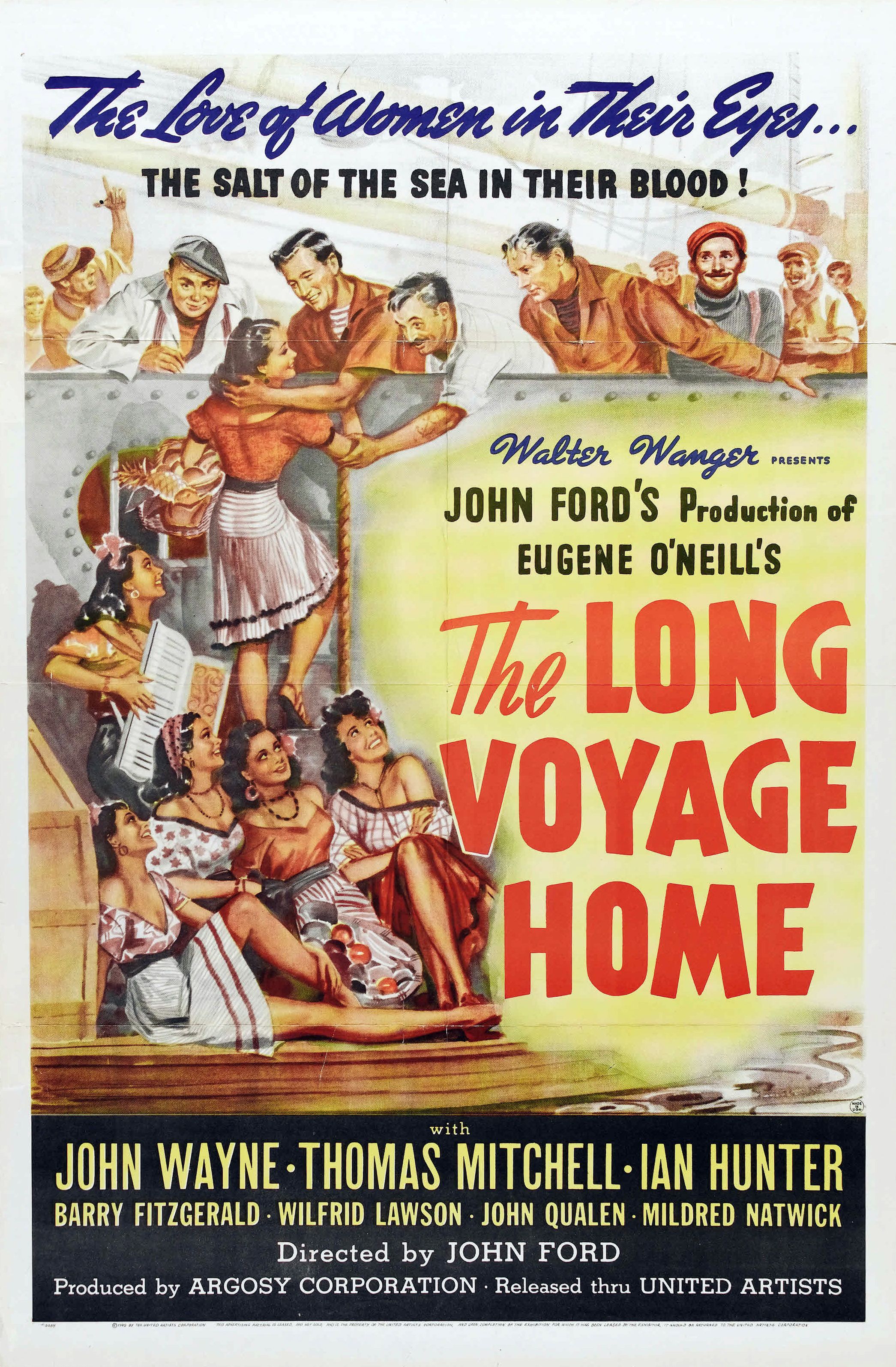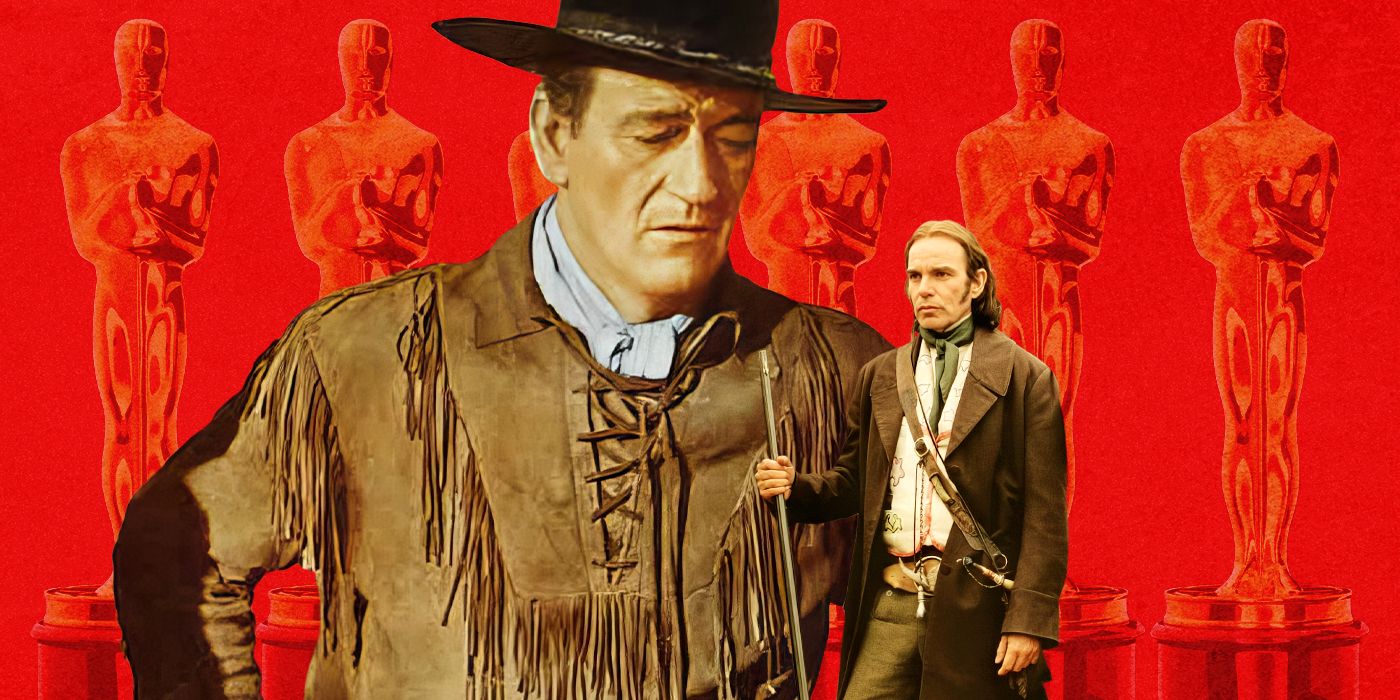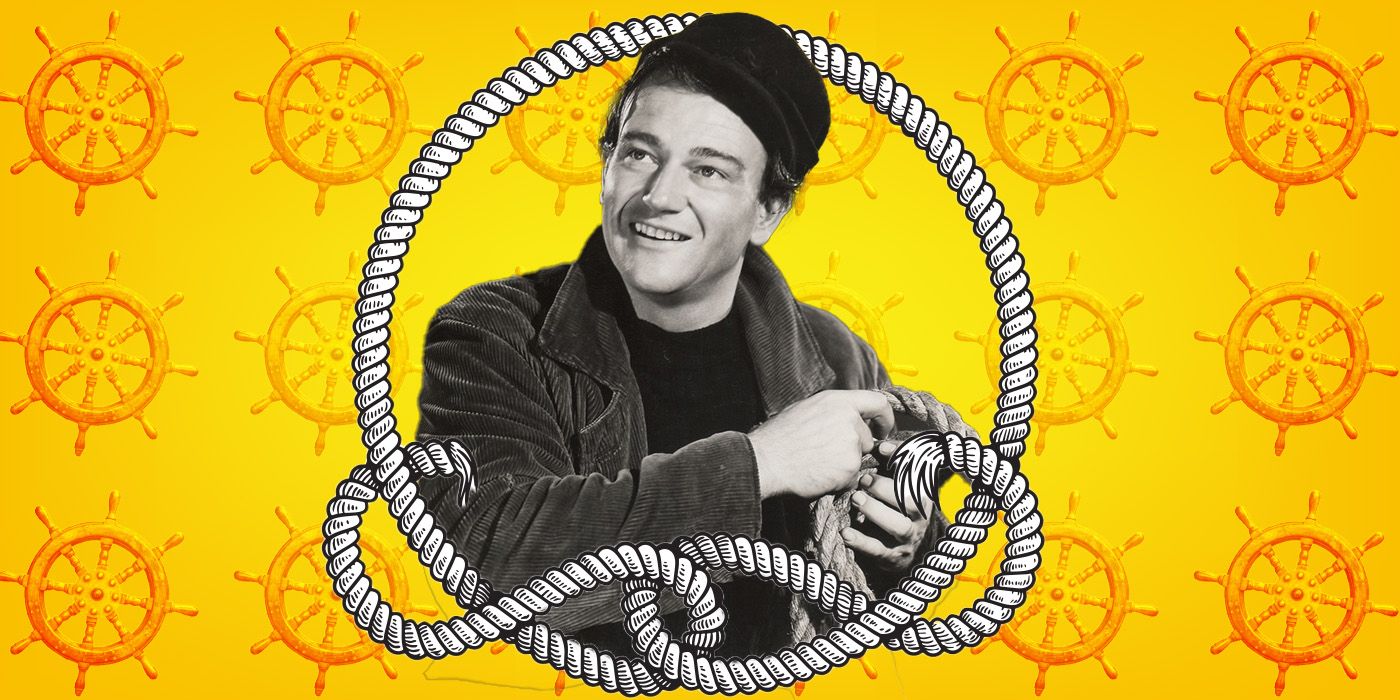The Big Picture
- John Wayne shines in a rare supporting role in John Ford's The Long Voyage Home, a World War II drama that demonstrates the actor's dramatic range.
- The film showcases Wayne's comedic chops and reveals a softer side to the typically rugged actor.
- Despite being underrated, The Long Voyage Home stands out for its authentic portrayal of maritime life during WWII.
To say that John Wayne radically redefined what a “movie star” could be would be an understatement. In a career that spanned well over half a century, Wayne appeared in countless classics, endearing himself to many generations of Western movie fans. Among the most highly acclaimed films of his career were the early action thriller Stagecoach, the revisionist revenge thriller The Searchers, and the reflective political satire The Man Who Shot Liberty Valance. This trio of Western classics all hail from director John Ford, Wayne's most trusted collaborator. Ford understood what made Wayne a compelling actor, and was able to give him roles that were befitting of his inherent skills. While it did not belong to the Western genre, Wayne gave one of his most underrated performances in Ford’s historical epic The Long Voyage Home.

The Long Voyage Home (1940)
A merchant ship's crew tries to survive the loneliness of the sea and the coming of war.
- Release Date
- November 22, 1940
- Director
- John Ford
- Cast
- John Wayne , Thomas Mitchell , Ian Hunter , Ward Bond , Barry Fitzgerald , Wilfrid Lawson , John Qualen , Mildred Natwick
- Runtime
- 105 Minutes
- Writers
- Eugene O'Neill , Dudley Nichols
What Is 'The Long Voyage Home' About?
While many of the greatest films about World War II had the benefit of hindsight, The Long Voyage Home is among the unique films about the conflict that was released as it was unfolding. Set shortly after the United Kingdom and its allies declared war on fascist Germany and the Axis Powers, The Long Voyage Home follows the crew of a British steamer as they attempt to navigate safe passage from the West Indies to England. The crew is fronted by the plain-spoken Irishman Driscoll (Thomas Mitchell), the zestful steward nicknamed “Cocky” (Barry Fitzgerald), the pensive Englishman Smitty (Ian Hunter), and the world-weary crewmember Davis (Joseph Sawyer). Despite their humble backgrounds, the crew grows to understand that they may be drawn into an international conflict that could make their trip home much more challenging than they had initially expected.
Although he would eventually come to star in countless classics, Wayne plays a rare supporting role in The Long Voyage Home. He co-stars as Ole Olsen, a humble Swedish farmer whose intention is to return to his homeland. Although Ole is unquestionably loyal to his crewmates and has an unshakable respect for Driscoll, it’s evident that he spends nearly every waking moment reminiscing about the wife and children who await him in Sweden. Ford is often a very empathetic filmmaker, and he gives Wayne the opportunity to do some internalized soul-searching. While images of Olsen’s family photos suggest that he is haunted by not being at home, Ford forgoes traditional exposition by relying on the subtleties of Wayne’s performance.

John Wayne’s Oscar-Nominated Movie Was Remade and Completely Bombed
Billy Bob Thornton and Patrick Wilson tried their best...Although he earned his breakout role a year prior when Stagecoach changed the Western genre forever, Wayne wasn’t necessarily a major star when he was cast in The Long Voyage Home. At the time, Mitchell was a far more recognizable actor, having earned accolades for his work in Gone With the Wind and The Hurricane. Nonetheless, Wayne was able to fit within the ensemble and generously share the screen with his co-stars. During the sequences in which Ole and Driscoll reflect on their shared history, it almost feels like the passing of a torch from one great actor to another.
John Wayne Shows Dramatic Range in 'The Long Voyage Home'
Compared to other films about aquatic travel, The Long Voyage Home is relatively light on action, as the World War II backdrop is more contextual than integral to the narrative. Although spending time going through the routines that the sailors engage in could have made for a very dull narrative structure, Wayne is able to ensure that each of Ole’s actions reveal something about his characterization. It’s evident that Ole is an accomplished worker who knows the procedures of the ship inside and out. Considering that he is still relatively youthful, this suggests that he has spent a majority of his life out on the water. This plot point becomes particularly relevant when the ship makes a stop in Baltimore; when stepping on the surface for a rare break from duties, Ole isn’t entirely sure how he should act.
While the film speaks to the loneliness and desperation that come with maritime duty, The Long Voyage Home also reveals Wayne’s talents as a comedic scene-stealer. Although he is often considered to be the epitome of a Western masculine hero, Wayne was often willing to show his comedic side, and starred in many romantic comedies throughout his career. Wayne added some great physical humor during a key sequence where Ole and the crew begin partying at a seedy bar after reaching the end of their initial journey. While it’s a humorous moment, it feels like an authentic reaction from men who have been denied the luxuries of the surface. Ole’s aptitude for getting intoxicated adds an increased level of chaos to an already humorous situation.
'The Long Voyage Home' Shows a Softer Side to John Wayne
Although The Long Voyage Home is ultimately an ensemble film that takes a “slice of life” approach to the careers of sailors, Ole’s desire to return home becomes the overarching story of the narrative. It becomes inspiring to see how the other sailors rally behind Ole to help him reunite with his family; given the incredible work he put into their voyage, they are willing to take an extra step to aid their colleague in returning to his natural home. Wayne does a great job at showing how Ole is a man of two families. In many ways, he’s become closer to the men he’s served alongside than the wife and children he’s returning to.
While it did receive an Academy Award nomination for Best Picture, The Long Voyage Home is one of the more underrated films within Ford’s working relationship with Wayne. It was groundbreaking in its authentic depiction of maritime life, and feels even more impactful considering World War II was still ongoing during the production. The Long Voyage Home served as proof that Wayne was a more versatile star than he was often given credit for. Westerns may have dominated his career, but they did not entirely define it.
The Long Voyage Home is available to stream on the Criterion Channel in the U.S.

